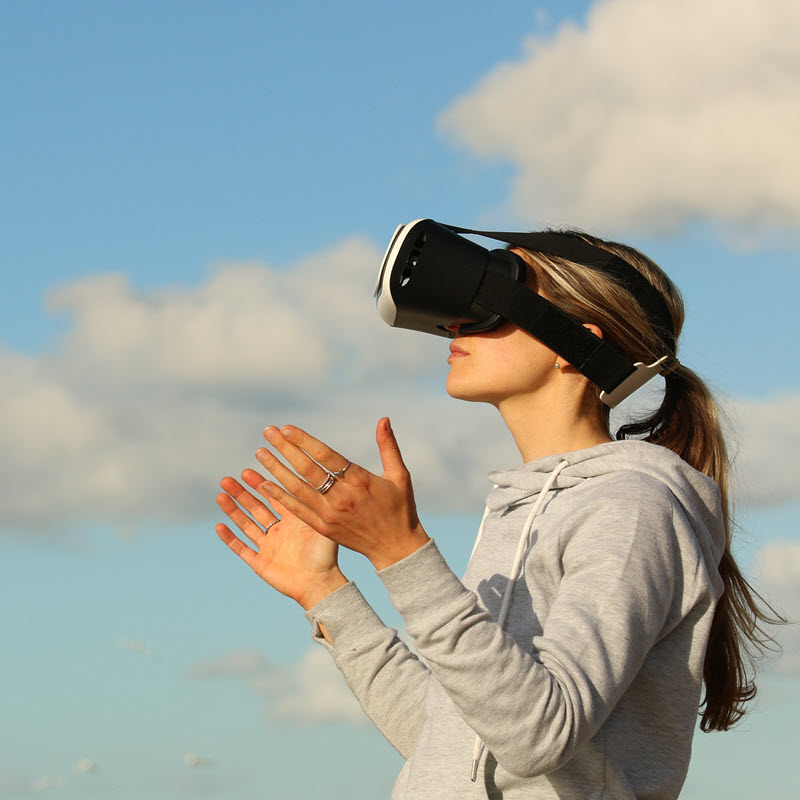
Virtual reality, or VR, uses technology to create a three-dimensional world. People using VR technology feel surrounded in this created world.
They can move around in it and interact with it. And you can integrate this equipment to create an impactful experiential marketing campaign.
Like the idea of experiential marketing itself, virtual reality adds another dimension of interactivity to peoples’ lives and experiences.
It engages the audience, immersing them in a memorable experience without them even having to leave their homes.
Transporting Your Audience
Experiential marketing is also about engagement. It’s easy to see the connection between experiential marketing and VR–– what better way to fully engage your audience’s senses?
Virtual reality makes consumers feel, physically, like they’ve been put into another place.
Mark Zuckerberg described it further.
“The magic of virtual reality software is this feeling of presence, the feeling you’re really there with another person or in another place.”
Virtual reality allows you to transport your audience. It’s like adding magic to your marketing campaign.
You can make a more intimate connection between your brand and your audience by letting them “try it out” virtually.
However, VR won’t give your marketing campaign a significant benefit if you don’t put in the time and effort for success. VR requires clear and organic implementation.
It’s a relatively new experience for the public, but that doesn’t mean that using VR will automatically make your brand more memorable.
People will most likely be excited to try out VR when you use it in your marketing campaign, but once you have their attention, you have to be ready to do something with it.
Explaining Clear and Organic Implementation
VR in marketing is more than just using the technology because it’s new and shiny. Find ways to use VR that you can integrate seamlessly into the campaign.
VR is gaining popularity, for example, in the realms of real estate and interior design, for its capacity to allow users to see homes or changes to homes without having to travel or make the changes.
Start thinking creatively. Your industry too can make organic use of VR. VR headsets can be used to create a sensory experience that places the consumer into a different environment. The possibilities are endless.
This aspect of VR, placing consumers into a different location, also taps into a different part of the consumer’s memory. Memory has a strong spatial component.
People more easily remember experiences tied to location, which means that using VR to put them into a new location will help you create a more memorable experience.
However, when you decide to implement VR into your marketing, do so with as much care you would an experiential marketing campaign without VR.
Bring in a strong marketing team to help with planning, goal setting, ROI optimization, etc.
Take advantage of the novelty and sensory engagement of VR to create a groundbreaking and unforgettable experience.
Learn more about our experiential marketing program and contact us today to help you!
